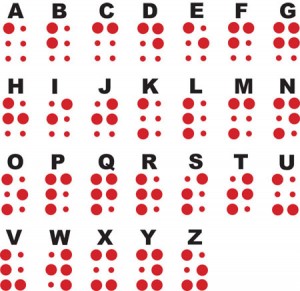Description
The term visual losses refers to children who are partially sighted/low vision, as well as children who are legally blind and totally blind. A visual impairment refers to the impact of losing sight and not to the eye condition or eye disorder (see full Glossary) itself.
- Partially sighted or low vision are terms used when the child has limited vision. The child cannot read at a normal viewing distance, even when they wear eyeglasses or contact lenses. Some of the children will require special education support at school. In British Columbia, a child with vision 20/70 will qualify to receive special needs support[1].
- The World Health[2] organization considers these five categories for visual impairments
1 = 20/200
2 = 20/400
3 = 5/300
4 = light perception only
5 = no light perception
- Legally blind means that the child has less than 20/200 vision in the better eye or a very limited field of vision
- Totally blind students have no vision left, and they need to learn via Braille (Fig. 1) or other non-visual media.
Figure 1. The Braille Alphabet
Characteristics
The effect of visual problems on a child’s development depends on several factors. These include:
- How severe the loss of sight is;
- The type of vision loss;
- How early the condition appeared in the child’s life;
- The developmental level of the child:
o Many children who have multiple disabilities may also have visual impairments. These may result in other delays (e.g., motor, cognitive, and/or social developmental delays).
o In addition, since the child cannot see their parents or peers, they will not be able to imitate and understand others in what is called social behaviours (see full Glossary) and nonverbal cues (see full Glossary).
Intervention Options
Children with moderate to severe visual impairments may require additional support for their motor development. Physiotherapy and/or occupational therapists may work with the child, family and their service providers in preschool and /or school. In British Columbia, children with visual impairments who require additional support may be referred to the Provincial Visual Impairment Program offered through BC Children’s Hospital and Sunny Hill Health Care Centre.
Educational Implications
Children with visual impairments should be assessed early so that they can benefit from early intervention programs. Technology in the form of computers and low-vision optical and video aids help many children with vision impairments (at different levels) to participate in regular class activities. Large print materials, audio recordings of books, and Braille books (Fig. 2) are available.
Figure 2. Reading a Braille book
Students with visual impairments may need extra help with special equipment and modifications to the typical classroom activities to emphasize listening skills, communication, orientation and mobility, vocation/career options, and daily living skills. Students with multiple disabilities that include visual impairments have a greater need to receive services from different professionals working in a team (see full Glossary). These children may require more intensive support on self care (like eating and toileting) and daily living skills (like crossing the street and catching a bus.
Resources
Provincial Resource Centre for the Visually Impaired (British Columbia, Canada) http://www.prcvi.org/related.aspx
The Texas School for the Blind and Visually Impaired – Resources for Infants and Toddlers www.tsbvi.edu/attachments/1051_infantvh.doc
The World Health Organization – Visual Impairments Report http://www.who.int/blindness/GLOBALDATAFINALforweb.pdf
To learn about visual impairments in the middle childhood years, please visit the six to 12 part of this course.
[1] BC SPECIAL EDUCATION SERVICES: A MANUAL OF POLICIES, PROCEDURES AND GUIDELINES http://www.bced.gov.bc.ca/specialed/special_ed_policy_manual.pdf#page=143

